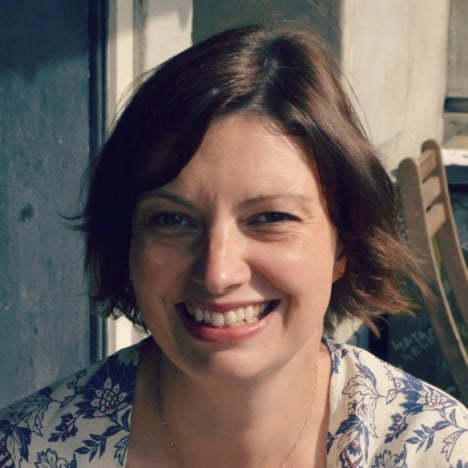Why Danish public healthcare beats private

Expat blogger Melanie Haynes has had more recent experience with the Danish health system than she'd like but she says that nation's public hospitals and clinics give better service than private alternatives.
Over the last year I have seen more of the Danish healthcare system than the average person. I have experienced care from paramedics in an ambulance, admittance to the emergency room, a five hour operation, a stay on a (very clean) ward, out-patient care, ergotheraphy, physiotherapy, another emergency room visit after calling 1813 (I was third in the queue and dealt with very efficiently), and various invasive procedures that are top of my list of things not to experience again.
All of this was paid for by our high taxes and I believe it was worth every krone.
Counterpoint: Why Denmark's health service needs treatment
I read somewhere that Denmark has a system that opponents of public healthcare hate: a publicly-funded healthcare system that works. All residents who hold a yellow CPR card are covered for free medical consultations and care. Other services such as prescriptions, dentistry, and specialist care such as physiotherapy (once you have a referral from a doctor) are subsidised.
Despite the current media storm around waiting times for the emergency phone line 1813, surveys show that almost 90 percent of Danes are happy with the public healthcare system. Based on my own personal experiences in the UK, Germany and the US I can only agree with them. And with only 27 percent of the Danish population having private healthcare packages (normally to help with the costs of dentistry and medications) the system must be working.
You often hear expats moaning about the healthcare system here, that doctors employ an overly pragmatic approach to minor ailments and have a reluctance to refer patients on demand. There is certainly an ‘if it ain’t broke don’t fix it’ approach that may frustrate some. There is also an element of personal responsibility associated with it too. Like in many aspects of Danish life, if you don’t ask and question, they won’t tell you. If you are not happy with the care or answers, press your doctor for more advice and information or look for alternatives.
I found myself in a position this summer where I felt that the system was too slow and I wanted to see an end to pain following my previous surgery earlier in the year. Due to the summer holidays I needed to wait an extra two months before I could have the last operation in my arm so I made the decision to go to a private hospital to have the operation almost straight away. I was lucky enough to be able to do this thanks to subsidised private healthcare from my husband’s job. In hindsight, two months is not a long time to wait and perhaps I should have gritted my teeth and waited.
Coming from the UK I had the view that private hospitals are far superior to national health ones. But the experience I had at a private Danish hospital was on par with – and in some aspects lacking – to my previous public healthcare experiences.
The nurses and doctors at the private hospital were competent and pleasant but the experience felt as if it lacked heart. I found the nurses, orderlies, doctors and other workers in regular hospital much more caring whereas the experience in the private hospital simply did what it said on the tin. I had an excellent surgeon and team, but the whole experience felt very rushed. I felt I was sent home far too quickly. Despite being told there was no hurry, there clearly was. I was probably safe to travel in the taxi home but I was still very groggy and nauseous, in contrast to the public hospital where it almost felt that they made me stay too long. There was never any rush there, they prepared my papers and said I could leave when I felt ready (in most cases I was very keen to leave but it was reassuring to know that the decision was mine).
The private hospital felt impersonal and I am not sure I would make the same choice again unless there was a dire need for it. After the contrasting experiences I will be sticking with the public system in the future but hopefully it will be a long time before I need it again.
 Melanie Haynes is originally from the UK and has lived in Copenhagen for eight years. She writes about life in Denmark on her blog Dejlige Days.
Melanie Haynes is originally from the UK and has lived in Copenhagen for eight years. She writes about life in Denmark on her blog Dejlige Days.
Comments
See Also
Over the last year I have seen more of the Danish healthcare system than the average person. I have experienced care from paramedics in an ambulance, admittance to the emergency room, a five hour operation, a stay on a (very clean) ward, out-patient care, ergotheraphy, physiotherapy, another emergency room visit after calling 1813 (I was third in the queue and dealt with very efficiently), and various invasive procedures that are top of my list of things not to experience again.
All of this was paid for by our high taxes and I believe it was worth every krone.
Counterpoint: Why Denmark's health service needs treatment
I read somewhere that Denmark has a system that opponents of public healthcare hate: a publicly-funded healthcare system that works. All residents who hold a yellow CPR card are covered for free medical consultations and care. Other services such as prescriptions, dentistry, and specialist care such as physiotherapy (once you have a referral from a doctor) are subsidised.
Despite the current media storm around waiting times for the emergency phone line 1813, surveys show that almost 90 percent of Danes are happy with the public healthcare system. Based on my own personal experiences in the UK, Germany and the US I can only agree with them. And with only 27 percent of the Danish population having private healthcare packages (normally to help with the costs of dentistry and medications) the system must be working.
You often hear expats moaning about the healthcare system here, that doctors employ an overly pragmatic approach to minor ailments and have a reluctance to refer patients on demand. There is certainly an ‘if it ain’t broke don’t fix it’ approach that may frustrate some. There is also an element of personal responsibility associated with it too. Like in many aspects of Danish life, if you don’t ask and question, they won’t tell you. If you are not happy with the care or answers, press your doctor for more advice and information or look for alternatives.
I found myself in a position this summer where I felt that the system was too slow and I wanted to see an end to pain following my previous surgery earlier in the year. Due to the summer holidays I needed to wait an extra two months before I could have the last operation in my arm so I made the decision to go to a private hospital to have the operation almost straight away. I was lucky enough to be able to do this thanks to subsidised private healthcare from my husband’s job. In hindsight, two months is not a long time to wait and perhaps I should have gritted my teeth and waited.
Coming from the UK I had the view that private hospitals are far superior to national health ones. But the experience I had at a private Danish hospital was on par with – and in some aspects lacking – to my previous public healthcare experiences.
The nurses and doctors at the private hospital were competent and pleasant but the experience felt as if it lacked heart. I found the nurses, orderlies, doctors and other workers in regular hospital much more caring whereas the experience in the private hospital simply did what it said on the tin. I had an excellent surgeon and team, but the whole experience felt very rushed. I felt I was sent home far too quickly. Despite being told there was no hurry, there clearly was. I was probably safe to travel in the taxi home but I was still very groggy and nauseous, in contrast to the public hospital where it almost felt that they made me stay too long. There was never any rush there, they prepared my papers and said I could leave when I felt ready (in most cases I was very keen to leave but it was reassuring to know that the decision was mine).
The private hospital felt impersonal and I am not sure I would make the same choice again unless there was a dire need for it. After the contrasting experiences I will be sticking with the public system in the future but hopefully it will be a long time before I need it again.
 Melanie Haynes is originally from the UK and has lived in Copenhagen for eight years. She writes about life in Denmark on her blog Dejlige Days.
Melanie Haynes is originally from the UK and has lived in Copenhagen for eight years. She writes about life in Denmark on her blog Dejlige Days.
Join the conversation in our comments section below. Share your own views and experience and if you have a question or suggestion for our journalists then email us at [email protected].
Please keep comments civil, constructive and on topic – and make sure to read our terms of use before getting involved.
Please log in here to leave a comment.